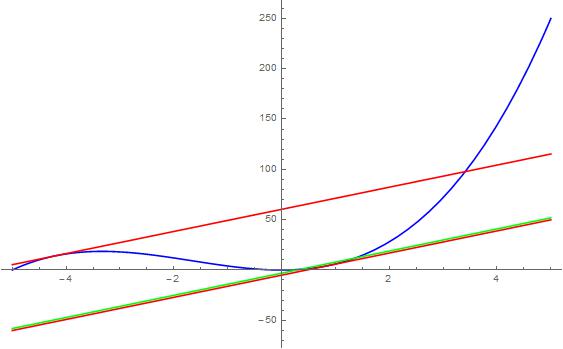The line #y=11x-pi# has a gradient of 11, thus all lines parallel to this will also have a gradient of 11. So, we must find the points on the curve that will have a tangent with a gradient 11.
To begin we differentiate to find the function that will give us the gradient of the tangent:
#y=x^3+5x^2#
#dy/dx = 3x^2+10x#
As the gradient needs to be 11: we set #dy/dx=11# so:
#3x^2+10x=11#
# -> 3x^2+10x-11=0#
We can now solve the quadratic, but we will need to use the quadratic formula for this:
#x = (-10 +- sqrt(10^2-4(3)(-11)))/(2(3))#
#=(-10+-sqrt(232))/(2(3))#
#=(-10+-2sqrt(58))/(2(3))=-5/3+-sqrt(58)/3#
Thus we have 2 points: #x=-5/3+sqrt(58)/3# and #x=-5/3-sqrt(58)#
Now it is possible to leave it like this or use a calculator to get a rough approximation of each root:
#x~~0.8719# [4 d.p.] and #x~~-4.2053# [4 d.p.]
Substituting these back into the equation we can get the #y# values:
#x~~0.8719 ->y=(0.8719)^3+5(0.8719)^2~~4.4639 # [4 d.p.]
#x~~-4.2053 ->y=(-4.2053)^3+5(-4.2053)^2~~14.0549 # [4 d.p.]
So the points are:
#(0.8719,4.4639)# and #(-4.2053,14.0549)#

To better help with the answer, the plot above shows us the function #y=x^3+5x^2# (blue line), #y=11x-pi# (green line, just above the bottom red line) and the parallel tangents (the two red lines). As can be seen, the two red lines run parallel to the green line and intersect the blue line at the points calculated.


